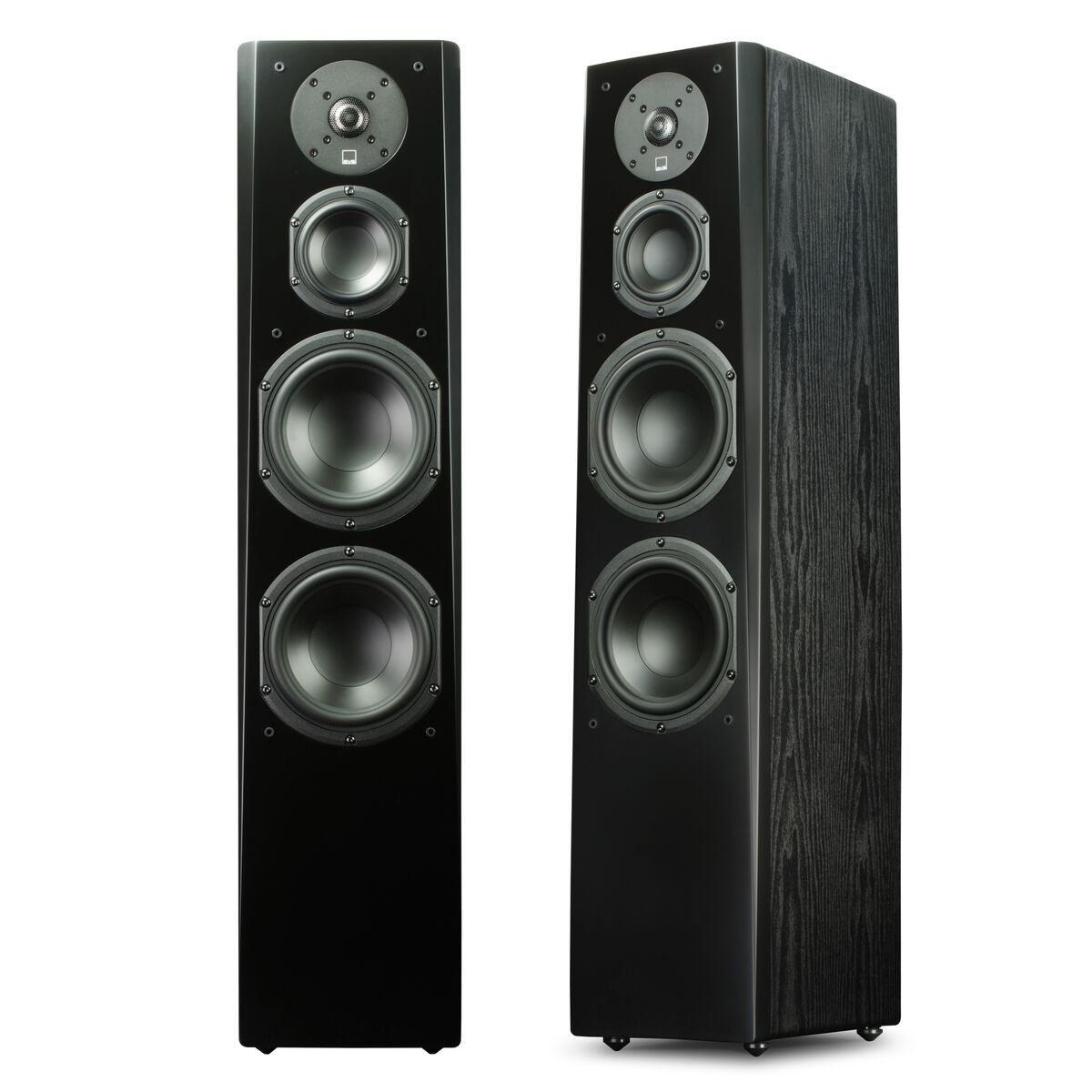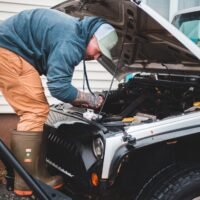Car audio can be adjusted to produce clear distortion-free output. However, dust, water, and blown-out speakers are constantly destroying car speakers and setting audio settings backward. How do you resolve this problem? Install car speaker baffles in your speaker holes before mounting car speakers. This has numerous advantages, which include protection against dust, water, and sound distortions. Speaker baffles are made from rubber and foam and can be homemade. However, motorists are now investing in factory-made speaker baffles because of their quality materials and ease of installation. How to install car speaker baffles is quite easy and this article will walk you through the process.
To install a speaker baffle, remove the speaker covering and place the baffle in the mounting space. Pass the speaker wires through the baffle before placing the speaker over the baffle. Screw your speaker and enjoy 100% distortion-free audio.
While speaker baffles do a good job of protecting speakers from dust and water, they also eliminate vibrations that cause sound distortions and reduce the quality of your car audio output. Installing a speaker baffle won’t damage your vehicle nor does it require any modifications to your door panel.
A car baffle is cheap and the installation process is stress-free and easy.
Table of Contents
What Are Speaker Baffles
Speaker baffles are manufactured using rubber and foam materials and serve as a protection and case for your car speakers. They cover both the rear and front of car speakers, protecting the back from sending vibrations throughout the vehicle and the front from water, dust, and other destructive elements.
Speaker baffles are necessary for easily accessible areas of your car, like the door. Constant opening and closing of car doors increase the risk of being in contact with water and dust, unlike speakers mounted in the deep interior of your vehicle.
Speaker baffles work in silence. Depending on the baffle size, motorists can cover speakers ranging from tweeters to subwoofers. Baffles are recommended mostly for trucks and larger vehicles. But they are also useful for private cars.
The Speaker baffle serves as a protective case for car speakers and reduces vibration by being in between the speaker and car chassis. The foam material absorbs the vibration, thereby reducing resonance from the speaker. It also absorbs destructive elements, preventing them from reaching the delicate car speaker surfaces.
Step By Step Process Of Installing Speaker Baffle In Your Car
Speaker baffle installation is simple with the right tools. Most of these tools can be found in your garage or at cheap prices at the store. Having the right tools guarantees the best after installation results. Here are the recommended tools for speaker baffle installation.
- Precision Knife
- Mounting Hardware
- Damping Material
- Panel Removal Tool
Precision Knife
Speaker Baffles come in different sizes so you’d have to make cuts to make them fit in your car. While it’s possible to cut speaker baffles with any sharp instrument, using a blade knife is efficient as it allows you to make precise and accurate cuts.
Wrong cuts may also damage the speaker baffle or your door panel. Precision knives are inexpensive. Get one for as low as $5.70.
Mounting Hardware
Mounting hardware is essential for unmounting and mounting your car speakers from the mounting hole. These include nails, screwdrivers, screws, and other recommended hardware by the manufacturer. Always use the recommended and proper size to ensure a tight seal.
Damping Material
This is placed underneath your speaker baffle and comes as an accessory with some high-end speaker baffles. Browse through our catalog to find the best speaker baffle for your car type.
Panel Removal Tool
Panel removal tools ensure 100% scratch-free door panel removal. Using tools from your mounting hardware may also be successful but a panel removal tool eliminates the risk of damage and guarantees a clean job.
If you already have these materials, go ahead with the speaker baffle installation by following these steps.
-
Remove Car Door Panel
The door panel covers the speaker and other car components on the door’s panel. Removing the car door panel should be done with the panel removal tool to prevent any damage to the thin plastic clips. should also lookout for the tiny wires behind the panel so as not to damage or break them.
-
Place Damping Material
If your speaker baffle comes equipped with damping material, place it first in the speaker hole. This is after you must have removed the speaker and carefully stored it in a safe place. Damping materials are good for killing vibrations being produced by car speakers. Good damping material enhances car audio by assisting your speaker baffle.
-
Make a hole in the speaker baffle
Place the baffle in the mounting space to see that it fits. If not, adjust it by pressing the bottom. Next, make a hole in the speaker baffle to create space for the speaker wires. Asides from creating space, it also prevents car audio from sounding flat, which is a common issue with speaker baffles. Make sure you use a sharp precision knife to cut.
-
Connect speaker wires
After placing the speaker baffle, pass the wire through the holes to the speaker before properly mounting it on the baffle. Make sure the baffle covers the entire speaker for maximum protection.
While reverse polarity won’t damage your speakers or reduce audio quality, make sure each connection has the correct polarity. Connect the red wire to the positive terminal and the black wire to the negative terminal.
-
Test the speakers
Before screwing the speakers and installing the car panel, test the speaker baffle by playing audio from your stereo.
-
Screw the speaker back to position
Using your screwdriver, secure the speaker back to the door panel. Use the right screws to make sure it is tightly fitted to avoid damage from falling units and other damages. Next, install the door panel carefully over the speaker. If you notice resistance, check the speaker to make sure that it is tightly fitted into the space. If not, you may want to remove the speaker baffle and start the process again.
What To Look Out For When Buying Speaker Baffle
The quality of speaker baffles varies depending on price, brand, and size. The most important quality to look out for is size. Does it fit properly in your mounting space? Loosely fitted speaker baffles may cause openings for water to pass through. It also causes noise pollution and sound distortion.
Another quality to look out for is perfectly foldable speaker baffles. Hard speaker baffles are hard to install as manufacturers’ generic sizes for all car types. Foldable baffles can fit into any shape of speaker holes. Foldable baffles are made from foam and rubber.
Test for waterproof. Make sure the baffle can stop water from entering your speakers. While all speaker baffles claim to be waterproof, poorly designed baffles can damage your speakers
Why You May Need Speaker Baffle In Your Car
According to speaker enthusiasts, not all car speakers require speaker baffles. Speakers with multiple drivers require baffles to reduce vibration support noise cancellation. However, for general speaker protection against weather elements, you should install a speaker baffle. Worried about bass reduction or elimination, then cut the base of your baffle.
Do Speaker Baffle Improve Sound
Sound improvement goes beyond a noticeable increase in the volume of your stereo system. While most people only associate sound improvement with higher gain, speaker baffles improve other sound qualities. And maximizes the driving experience of motorists. By installing a speaker baffle, undesirable high frequencies are canceled out, thereby producing clear sound reproduction of your favorite music.
Conclusively, speaker baffles can be installed by simply removing the door panel of your cars and mounting the baffle under the speaker. A proper installation guarantees zero vibrations and eliminates noise pollution



